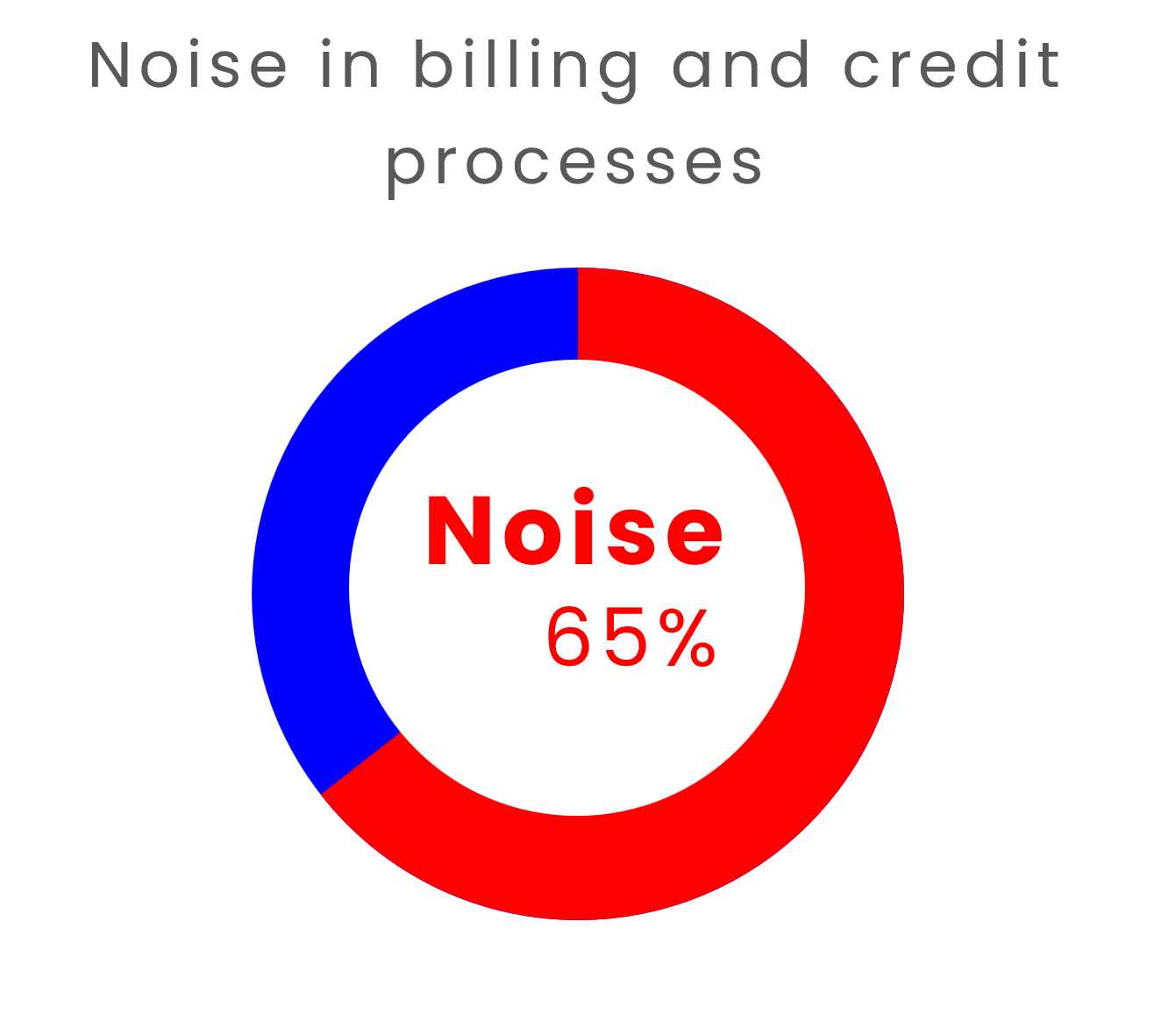Delivering results with Australia Post
Australia Post found 56% Noise in their billing and credit processes
As Australia Post was transforming its operations, improving internal processes became a top priority to boost customer satisfaction and employee engagement. Australia Post deployed XeP3 with a partner to review the billing and credit note processes, identifying key areas for improvement and ways to enhance the overall experience for staff and customers.
Process data was collected with 37 AP team members, representing 275 FTE across Australia Posts operational teams. These staff documented over 2,100 activity steps and assigned time to each.
The results showed that 65% of the effort was consumed by Noise.
Feedback from more than 100 customers and interviews with small and medium businesses gave insight into the billing experience. Our partner analysed credit note data and customer complaints to further determine the root causes of delays and other issues.
The key challenges staff shared were:
Poor information quality, flow and visibility
Unclear and fragmented accountabilities
System and technology limitations
Long elapsed times to resolve customer queries
Australia Post began to make change and address the noise
The Australia Post team stood up a series of workstreams to directly address these areas of Noise and failure and target the customer experience
Simplify the customer billing experience with easy-to-access help and support
Re-define and agree process and role design to improve first time right, and resolve any disputes much faster
Prevent, detect, and manage errors better through system improvements and automation
Simplify product and pricing for the customer experience
Target elimination of Noise to maximise billing accuracy
Put enhanced oversight and reports in-place to maintain long-term process performance and health
The team reduced the time it took to resolve customer billing queries by 55%
Thank you to the Bevington Group, who supported Australia Post to deliver this excellent work with XeP3





